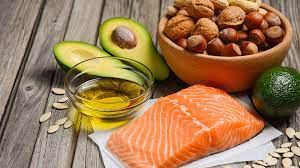Although the ketogenic diet was initially designed to treat children with epilepsy, it has now gained popularity as a weight-loss method.
According to numerous reports, this diet has resulted in dramatic weight loss.
It is pretty tough to achieve your vegetable and fibre needs while on the keto diet.
Ketogenic dieting should only be attempted under the guidance of a qualified healthcare professional, such as a dietitian or physician.
So, here are five things you can do to assist you in getting into ketosis:
1. Reduce The Amount Of Carbohydrates In Your Diet.
A standard carbohydrate intake limit for a keto diet is 50 grams per day.
Because of this, your body cannot convert carbohydrates into glucose because there are no carbs in your diet. In the absence of glucose, the body is compelled to use fat as an energy source, a process known as ketosis
A week or more of carb restriction is required for the body to exhaust its glucose reserves and enter ketosis. However, it's critical to maintain a carbohydrate deficit at all times!
To get back into ketosis, you must restrict your carbohydrate intake to less than 50 grams.

2. Consume More Heart-Healthy Unsaturated Fats.
Rather than burning glucose for energy, your body turns to fat when consuming a high-fat diet with low carbohydrate intake. That's the premise of ketosis.
This diet is high in unsaturated fats like avocado, olive oils, nuts, and other healthy fats.
According to the Dietary Guidelines for Americans, adults ages 14 and older should only consume 20% to 35% of their calories from fats, such as unsaturated fats, to maintain a healthy weight and avoid obesity.
It is crucial to note that while increasing your fat intake can help you achieve ketosis; it is also important to ensure that you are limiting your intake of saturated fat and instead focusing on your intake of unsaturated fat.
This is because saturated fats clog our arteries more easily.

3. Fast Intermittently
A state of ketosis is reached when the body no longer has access to glucose to burn. Fasting alone doesn't get most people into ketosis.
Once their fasting window ended, they would no longer need to use fat as an energy source.
Dieting is a well-known activity that can range from moderately to severely disturbed for many people.
4. Consume Less Protein
Protein accounts for only 10% - 15% of total calorie intake on an epilepsy keto diet. Ketosis can be disrupted if you consume more than that.
To put it another way, if you're trying to lose weight on a keto diet, you may want to limit your protein intake from 20% - 30% of your total calories.
The conversion of extra protein to glucose may make it challenging to sustain ketosis.
A healthy adult's protein intake ranges from 10% to 35%.
5. Work Out More
While working out, the body rapidly consumes its glucose reserves. The body changes to ketosis to burn fat for fuel if you've been fasting for more than a couple of hours.
Exercising for long periods can therefore hasten the process of entering ketosis.
Everyone, of course, can reap the benefits of a regular exercise regimen. The current guidelines prescribe 150 minutes of moderate-intensity exercise or 75 minutes of high-intensity exercise per week.